Flag of Russia
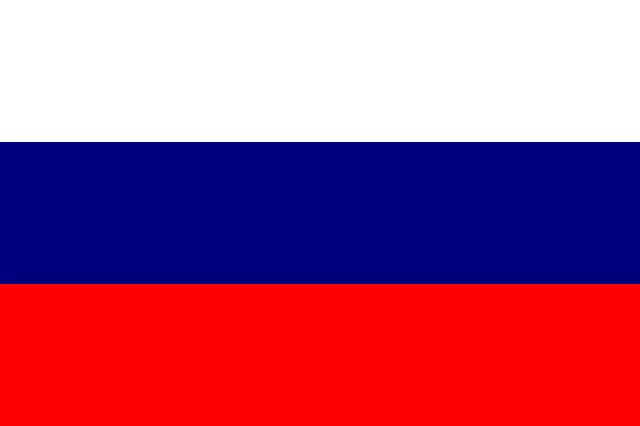
Russian flag
- Official approval of the flag: 1991
- Flag emoji: 🇷🇺
- Period: Modern flags
- Type of flag: Flags of countries • Flags of continental countries
- Belonging to the continent: Europe
- Colors on the flag: white • blue • red
- Emblem on the flag: Without emblem
Russia is located in Eastern Europe and North Asia, and is the largest country in the world by area, covering 17,098,242 km². The capital is Moscow. The population is about 146 million people. The official language is Russian, and many regional languages are also recognized in the national republics. Russia is a federal republic with a diverse cultural heritage, including that of the USSR and the Russian Empire. The main ethnic group is Russians, with numerous national minorities such as Tatars, Bashkirs, and Chechens.
The flag of the Russian Federation is a horizontal tricolor of three equal-sized stripes: white, blue, and red. It is one of the main state symbols of Russia, along with its coat of arms and anthem. The flag symbolizes the country’s historical heritage, statehood, strength, and unity.
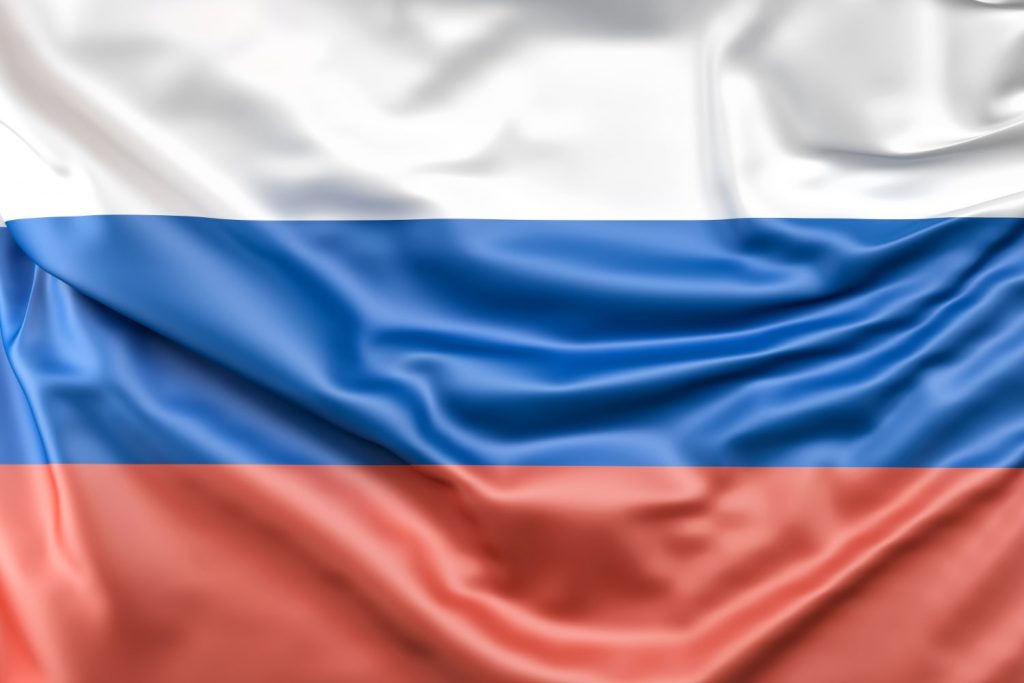
History of the Russian flag
The origin of the flag
- XVII century: The first mention of the white, blue, and red flag appears during the reign of Tsar Alexei Mikhailovich. The design was inspired by the Dutch tricolor and was used mainly in the navy.
- 1696: Peter the Great officially introduced the tricolor as the flag of the Russian merchant navy. This was the first step towards the creation of a national flag.
Tsarist Russia, the USSR and the present
- 1858-1883: Emperor Alexander II approved the black, yellow, and white flag as the national flag, but the white, blue, and red flag remained popular among the population.
- 1917-1991: After the October Revolution, the flag of the Russian Empire was abolished. During the existence of the USSR, a red flag with a hammer and sickle was used.
- August 22, 1991: The white, blue and red flag was officially restored as the national symbol of Russia after the collapse of the Soviet Union.
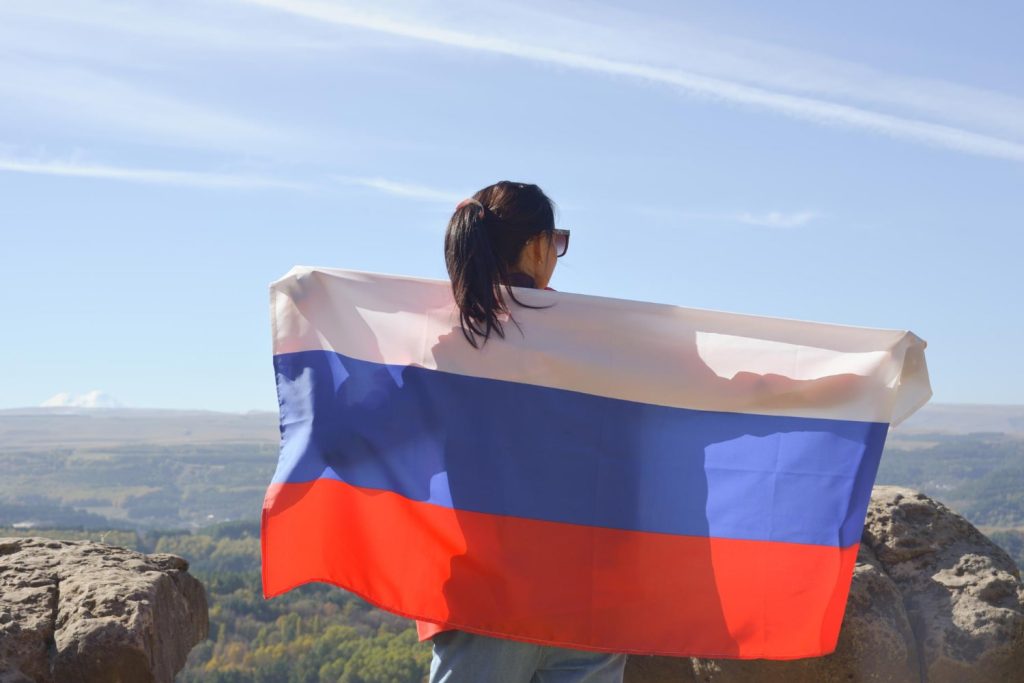
Colors of the flag of Russia
Meaning of the flag colors
There are several traditional interpretations of the meaning of the colors of the Russian flag:
- White -symbolizes nobility, honesty and peace.
- Blue – represents loyalty, faith and constancy.
- Red represents courage, strength and love for the Fatherland.
Another interpretation is related to the three historical parts of the state: white – Great Russia, blue – Little Russia (modern Ukraine), red – White Russia (modern Belarus).
Flag color codes
The official shades of the Russian flag are approved for accurate use in printing and design:
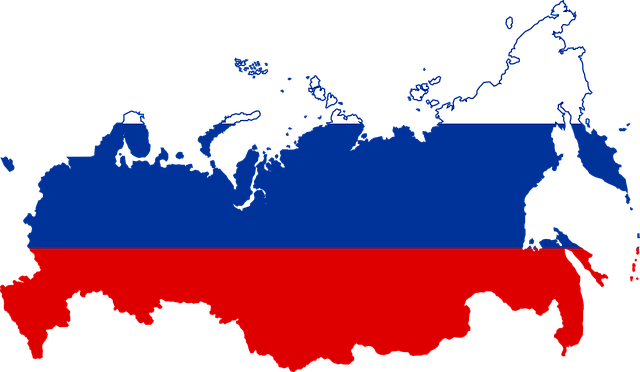
- White:
- RGB: (255, 255, 255)
- HEX: #FFFFFF
- CMYK: (0, 0, 0, 0)
- Pantone: White
- Blue:
- RGB: (0, 57, 166)
- HEX: #0039A6
- CMYK: (100, 86, 0, 13)
- Pantone: 286 C
- Red:
- RGB: (213, 43, 30)
- HEX: #D52B1E
- CMYK: (0, 90, 86, 16)
- Pantone: 185 C
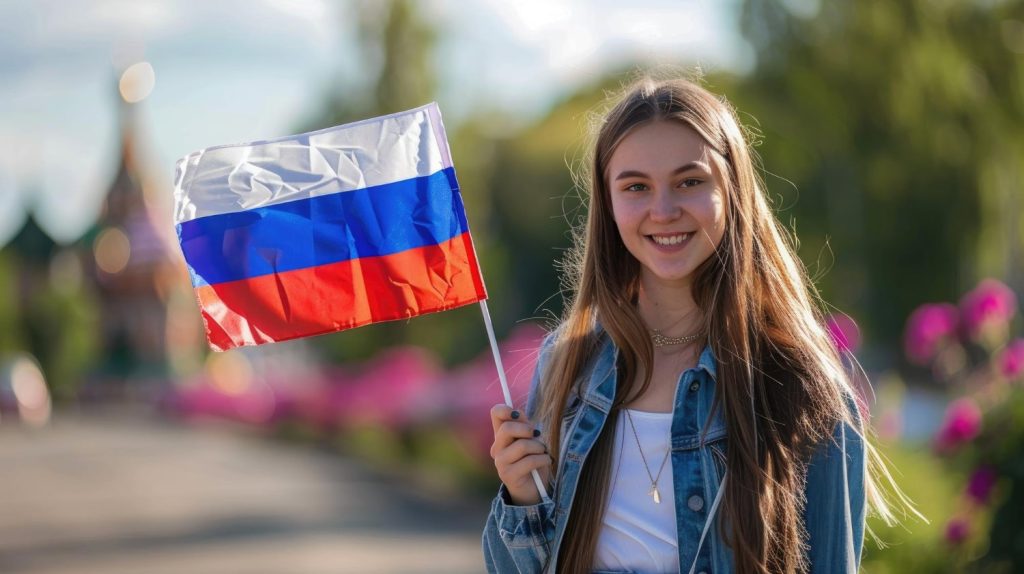
Format and proportions
The flag of Russia has a classic horizontal tricolor design.
Flag proportions
The official aspect ratio is 2:3, meaning that the flag’s height is two-thirds of its width.
The arrangement of the stripes
- The upper stripe is white.
- The middle stripe is blue.
- The bottom stripe is red.
In the case of a vertical flag, the order of colors is preserved from top to bottom: white, blue, red.
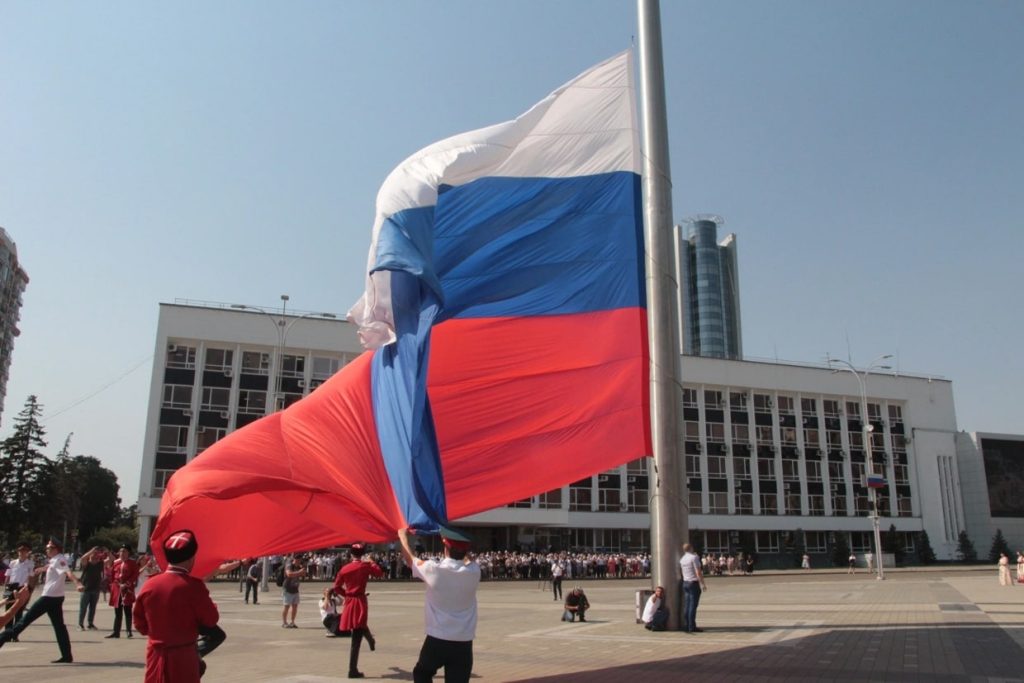
Flag raising ceremony
The flag raising ceremony of the Russian Federation is an official state procedure that demonstrates respect for the national symbol.
When it is held
Ceremonies are held on the following days:
- August 22 – National Flag Day (established in 1994).
- June 12 – Day of Russia.
- During official state celebrations, including the presidential inauguration, military parades, opening of parliamentary sessions, etc.
How it is held
- Location: The ceremonial raising of the flag most often takes place near government buildings, schools, military units, stadiums and memorials.
- Accompaniment: The flag is raised to the playing of the Russian national anthem.
- Participants: The ceremony usually involves an honor guard, military personnel, or government officials.
- Protocol: All those present must stand during the hoisting. Men without a headdress and military personnel salute.
Special features
- On ships, the flag is raised daily at 8:00 am and lowered at sunset.
- In educational institutions, the flag-raising ceremony can open the school week.

Interesting facts about the flag of Russia
- Inspiration for other countries: The Russian flag has become a model for many Slavic countries, including Serbia, Slovakia, Slovenia, and Croatia.
- A symbol of change: After the collapse of the USSR, the return of the tricolor became a symbol of a new democratic era.
- Navy flag: Russia also has other types of flags, such as the St. Andrew’s Flag as a symbol of the Navy.
The Russian flag is not just a combination of three colors. It is a symbol of great history, national continuity and identity. Its raising is accompanied by solemnity and respect, emphasizing the importance of the flag as the main symbol of the country.
